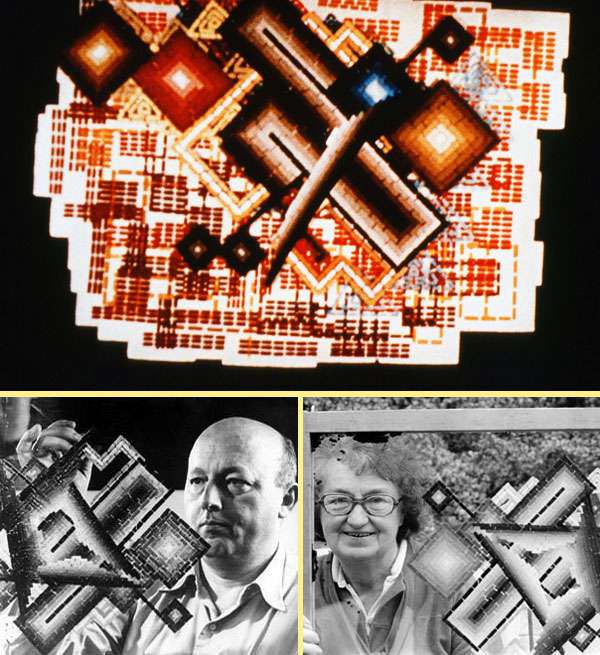
On June 22, an elegant, imaginative, interactive Google Doodle celebrated the 117th birthday of Oskar Fischinger (1900 – 1967), the great visual music/abstract animation film pioneer. Visitors to the Doodle homepage were invited to create both music and accompany it with non-objective imagery — a visceral, tactile homage to Fischinger, “the Kandinsky of cinema.” You can try it here:
It was very gratifying to me, to see a new generation discovering Fischinger and his enchanting, hand-drawn, pre-digital moving art. I was a close friend, over the course of three decades, of his widow, Elfriede Fischinger (1910-1999) and her associate, Dr. William Moritz (1941-2004), film historian and Fischinger’s biographer.
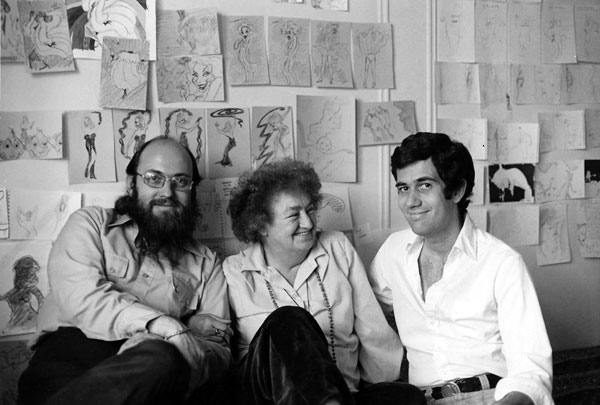
For years, Elfriede and Bill traveled the world screening Oskar’s films and curating exhibitions of his paintings, keeping his name and reputation alive. I met Elfriede and Bill at the 1976 Ottawa Animation Festival and wrote a candid and affectionate article about them, their adventures and our friendship in the Summer 1978 issue of Funnyworld, Michael Barrier’s brilliant and long-lamented magazine.
In 1977, I was the on-camera host of a CBS Camera Three program, “The Art of Oskar Fischinger,” the first national exploration of his life and work. On the show, I interviewed Mrs. Fischinger and Dr. Moritz.
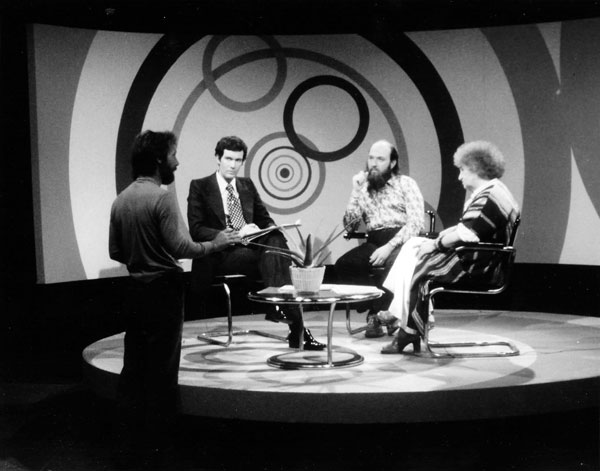
How thrilled Elfriede and Bill would be to see the Google Doodle; Angie Fischinger, youngest of Oskar and Elfriede’s five children, wrote a touching tribute to her father, noting “It’s impossible to deny true talent, and so it stands the test of time and will continue to do so.”
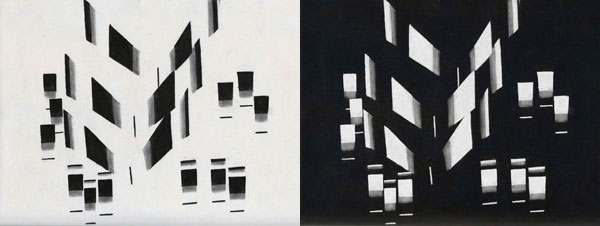
Oskar Fischinger was a fiercely independent, freethinking filmmaker, who began making exquisite film art in the 1920s in Germany. By the 1930s, his fame had grown due to his series of “studies”: geometric shapes and patterns synchronized tightly to classical music and jazz, first in black and white, later in glorious color.
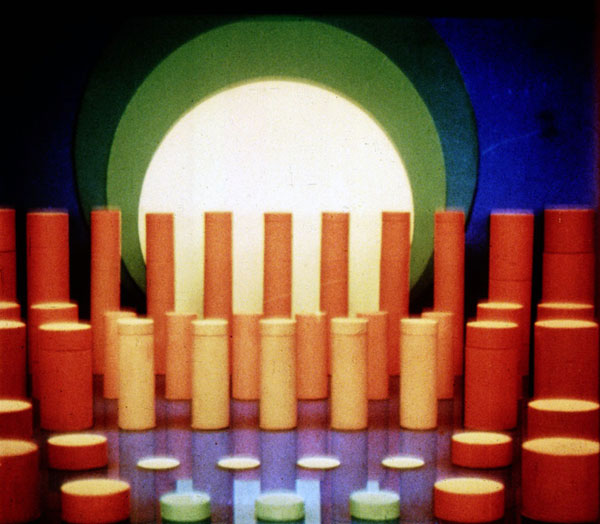
In America in 1936, he and his family sought refuge from the Nazis, who vilified his prize-winning abstract films as “Entartete Kunst”,or “degenerate art”.
Fischinger found little support for his non-commercial films in this country, and there was virtually no market for the theatrical advertising films that had sustained him in Europe. To survive, he sought employment at commercial Hollywood studios, and worked, always briefly and always unhappily, at Paramount, MGM, and Disney, where his films inspired Fantasia’s semi-abstract “Toccata and Fugue” section.

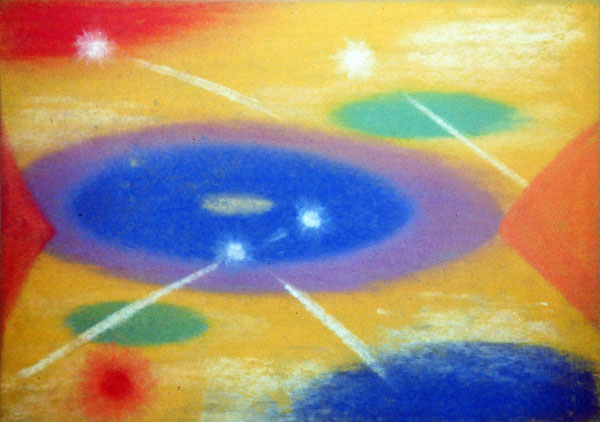
Fischinger was frustrated by the American studio system, where his distinctive personal vision was subject to modification and adaptation by production teams.
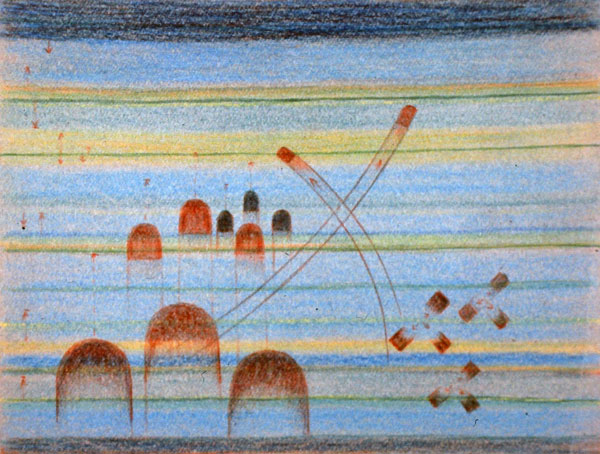
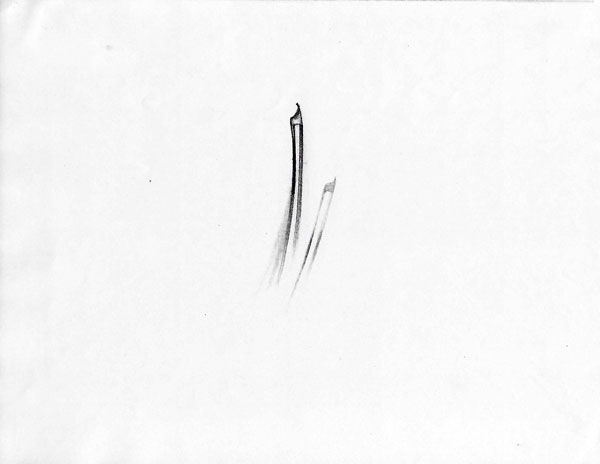
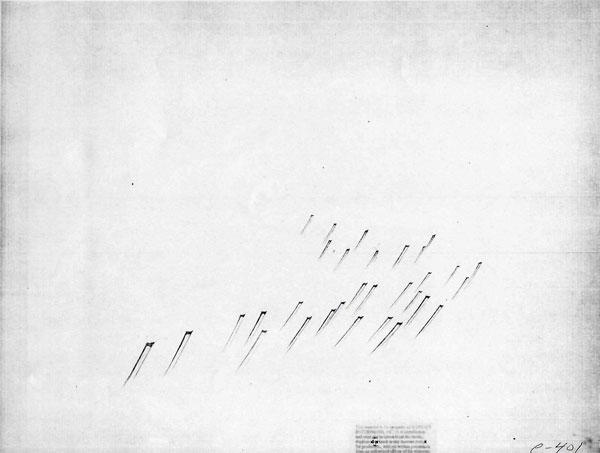
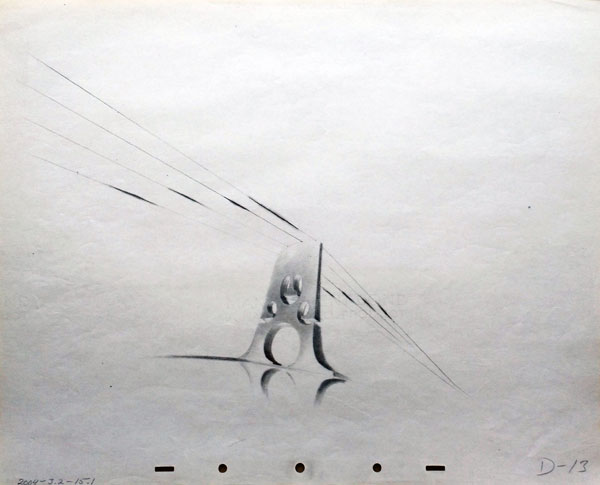
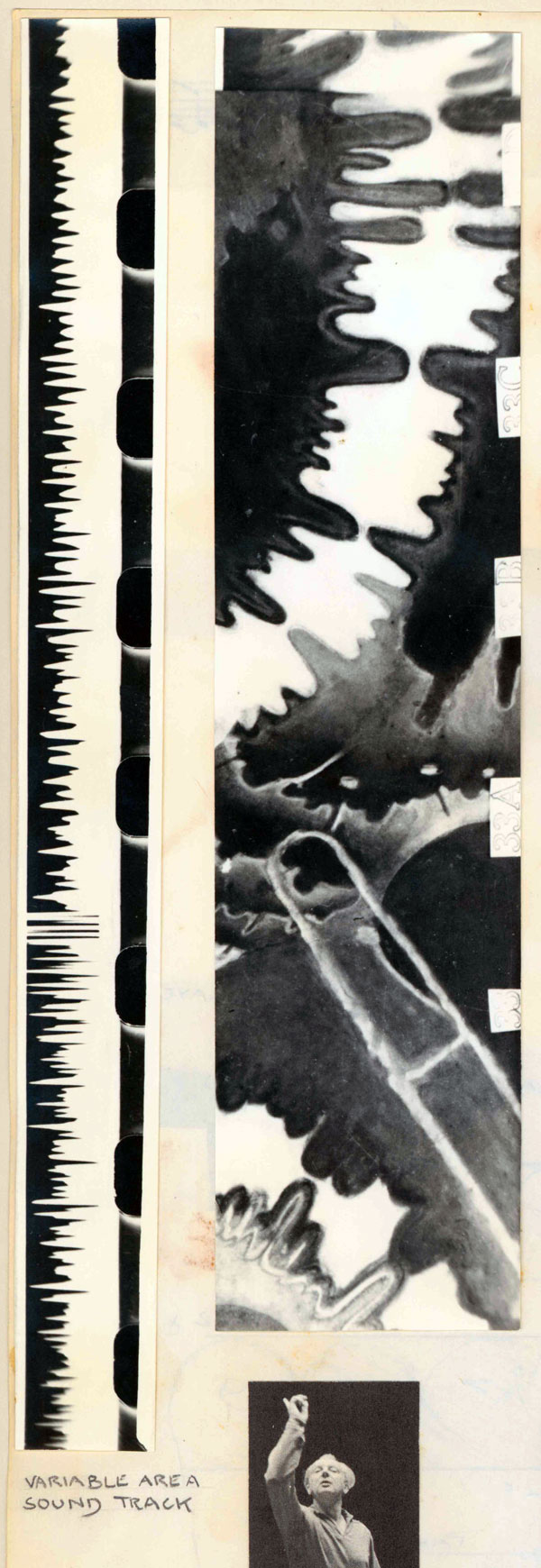
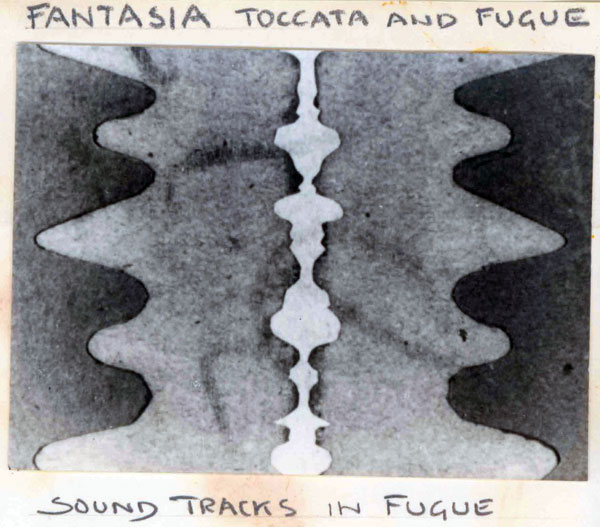
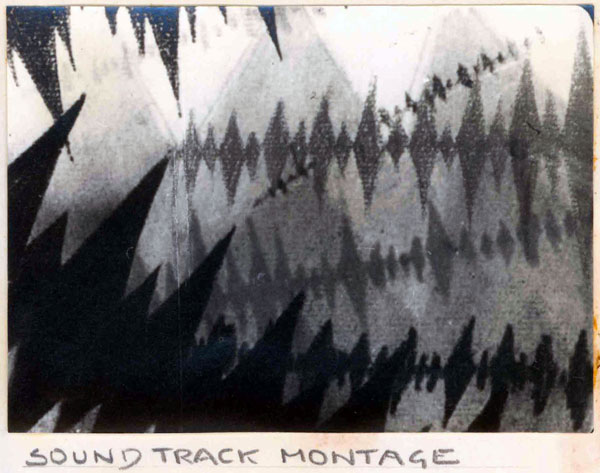
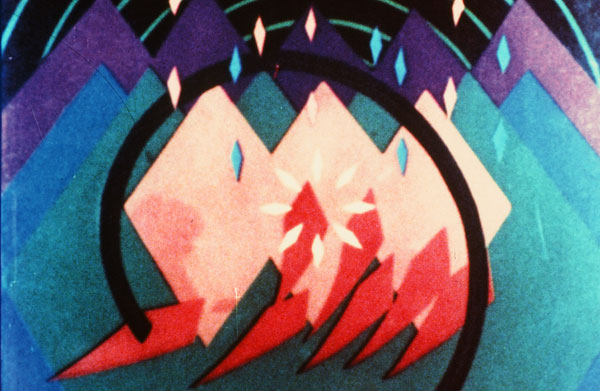
With the help of small grants from the Solomon R. Guggenheim foundation, Fischinger continued creating short non-objective films, completing his last in 1947: the mesmerizing Motion Painting No. 1. His final twenty years were spent painting stunning abstract canvases.
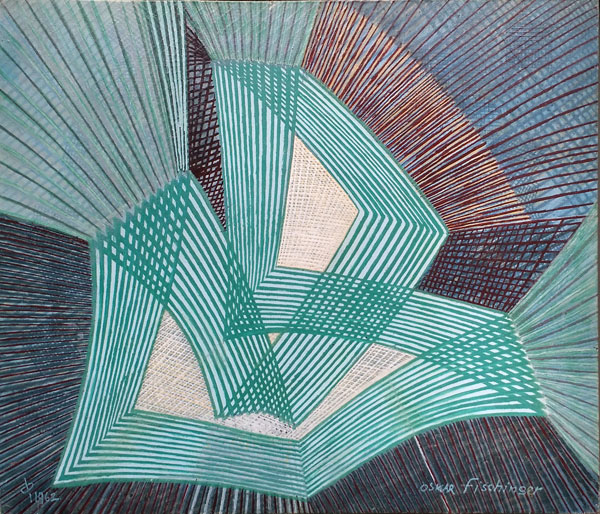
Fischinger’s artworks, both filmed and painted, have inspired generations of artists, including John Cage, Norman McLaren, Orson Welles, Len Lye, Hy Hirsh, Jules Engel, Sara Petty, Larry Cuba, John and James Whitney, Steven Woloshen, Vibeke Sorensen, Harry Smith, Jordan Belson, Edgard Varese, Alexander Alexeieff, Jeff Scher, Mary Ellen Bute, among others.
As I wrote in a New York Times article about “A Fischinger Centennial Celebration” at MoMA in 2000, Fischinger’s films and paintings “easily and joyfully communicate with all sorts of audiences around the world. Far from dry intellectual exercises, his symbols and colors in motion are witty, whimsical, and beautiful as well as profound.”
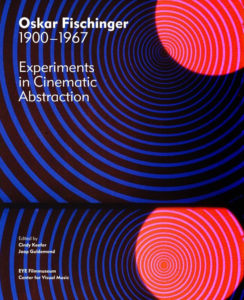
In addition to the Google Doodle project Fischinger’s film work continues to amaze contemporary audiences around the world, thanks to the diligent efforts of the Center for Visual Music (CVM), under the direction of Cindy Keefer, in Los Angeles. http://www.centerforvisualmusic.org/
The non-profit archive is dedicated to visual music, experimental animation, and abstract media. The CVM online store sells Fischinger DVDs, books, objects and ephemera, and curates Fischinger exhibitions and screenings around the world.
You can view excerpts from Fischinger’s films (and see complete films on demand) here.
Last fall, for instance, CVM loaned its 2012 reconstruction of Raumlichtkunst (1926/2012), Fischinger’s 1920s multiple-projector work, to the Whitney Museum of American Art’s vast exhibition, Dreamlands: Immersive Cinema and Art, 1905-2016. The huge triptych was presented as an HD three-channel installation; elsewhere in the exhibition, CVM also showcased five Fantasia concept drawings by Fischinger from the CVM collection.
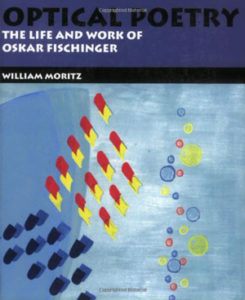 William Moritz was a co-founder of CVM, and his archives form an important part of the Center’s research collection. Bill died in 2005, at age 63, after a long battle with cancer. His last years were spent completing his long-awaited biography of Oskar Fischinger, Optical Poetry: The Life and Work of Oskar Fiachinger, which was published just weeks before his death.
William Moritz was a co-founder of CVM, and his archives form an important part of the Center’s research collection. Bill died in 2005, at age 63, after a long battle with cancer. His last years were spent completing his long-awaited biography of Oskar Fischinger, Optical Poetry: The Life and Work of Oskar Fiachinger, which was published just weeks before his death.
Until her own peaceful death in May 1999, a few months shy of her 89th birthday, Elfriede Fischinger continued to restore her husband’s films, promote them, and present them at international screenings. She remained a vital link and witness to the European film avant-garde of the 1920s and 30s. It was my pleasure to know her and work with her, and just to be with her on numerous occasions through the years.
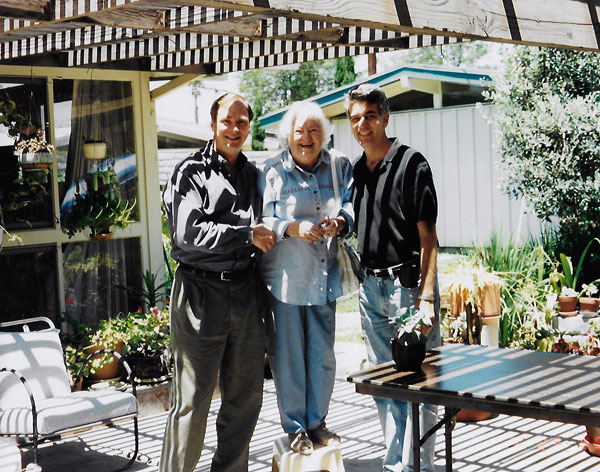
She never changed, I am pleased to say. Her enthusiasms, passion, sense of fun, vibrant personality, and overwhelming childlike energy remained the same, even as her frizzy hair turned from wren brown to snow white.
The last time we were together was in New York in November 1998, a few months before she died. She and Bill Moritz appeared as the star attractions of Anthology Film Archives’ First Light festival of abstract films. Because of Anthology’s ever-precarious finances, Elfriede and Bill agreed to third-rate hotel accommodations, a second-rate airline, and a tiny honorarium, offering it all up for the greater glory of Oskar.
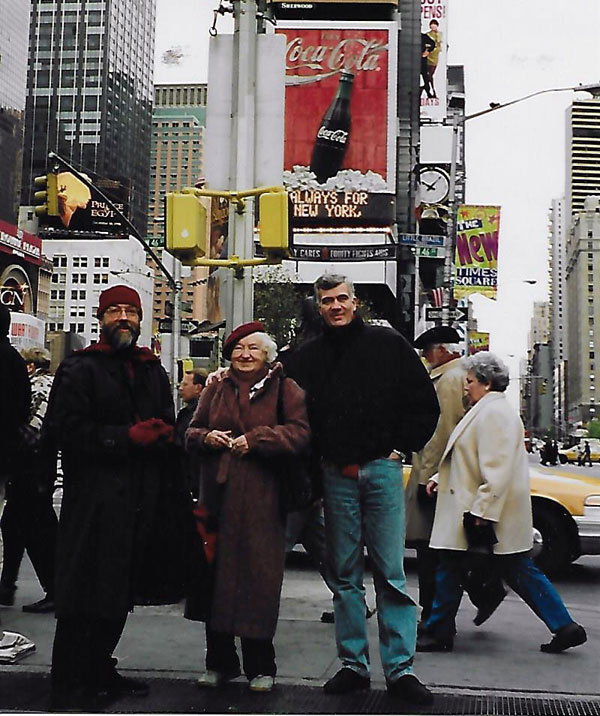
That final visit left me with a memorable image of Elfriede. I can still see her standing joyfully smiling in Times Square as electric neon lights flashed on and off, whirled, zigzagged, twisted in space, exploded and burned with colors that would embarrass a rainbow; and as rows of blurred human forms crossed streets, dashed dynamically through the concrete corridors, twisted, turned and nearly colliding with each other and Elfriede. She beamed through it all, standing solidly at the center of a real-life three-dimensional Fischinger canvas: a gigantic Kreise, a cosmic Optical Poem, an Allegretto without limits, an eternal Motion Painting.
It was a beautiful and unforgettable sight. As she used to say when referring to the ultimate of any and every thing: “It vas IT!”
Hits: 5566


Dear John, thanks for this delightful article. It was very interesting to learn all about Oskar, his art and his lovely wife. Thanks for share with us, not only your knowledge of his abstract art but also your many memories of Oskar and Elfriede.
Kind wishes from Argentina, hoping to see you soon,
Francisco
The American publisher of “Optical Poetry”, Indiana University Press, asked me for advice about the book.
“I must warn you that the author is a friend of mine”, I answered.
“We trust your impartiality”, they concluded.
I said that the book had 1) to be published and 2) straightaway.
Bill could handle it before dying. In this case my impartiality was an easy commitment.
0
You have made a magnificent documentation of independent animation history here. The photos of you with Elfriede and Bill are a treasure. Back in 2000, Bill was in Santa Fe doing a presentation for the College of Santa Fe’s “Moving Image Arts Department” and I got to spend a full day with him both at my studio showing new work and taking him to archival locations in Santa Fe. Bill was the “library” of esoteric information about history.
Wonderful piece, John! Thank you for sharing your memories of this wonderful friendship that was so enriching for you.
John, so wonderful to see your personal experience and scholarly wisdom enlighten us again. Thank you for this, it is inspiring.
John,
I much enjoyed your Fischinger article. My two greatest animation film making inspirations were Norman McLaren & Oskar Fischinger. (I don’t want to leave out one more — UPA was the third.) I was in High School when I first saw Oskar’s films on a local Sunday morning arts program in LA — “Lorser Feitelson on Art” — it was telecast in color — still rare at that time. Inspired by what I saw (probably Motion Painting #1, Composition in Blue, Allegretto), I started filming my own crude 8mm non-objective animation experiments. I once met him at a Jewish Community Center screening of his films in LA. Sorry, I have nothing deep to say about the meeting except that I told him how much I liked his films. I attended a couple of other LA screenings like that one. He was usually there. And I attended all of the MoMA 100th’s Birthday events. Fantastic.
In late 1966, I was able to meet him at his home on Wonderland Ave. As usual, he didn’t want to talk about his films. It was a somewhat awkward situation. I don’t remember seeing Elfriede there. I assume she stayed quietly in the background. He was working on what I believe turned out to be his last easel painting, “Nirvana.” It consisted of a pair of large eyes made up of thousands of tiny dots floating over a field of thousands more dots. He said what was then visible would be invisible in the finished work. In 1970 I saw the finished work at an extensive Fischinger exhibition, “Bildmusik,” at the Long Beach Museum of Art in California. In their gift shop, I bought a Fischinger flip-book (Film-Flip, A 3-second Part of Mutoscope Reel No. 1), which of course I still possess. After Oskar’s passing, I saw a lot of Elfriede (and Bill Moritz) at screenings and other LA independent film events. She loved my film “Kick Me” and swapped it with me for a 16mm print of “Motion Painting #1.”
In 1981, I was at the Toronto Film Festival which was having a 3D program. They had Oskar’s 1-minute stereoscopic film. The projectionist told the festival organizer that he couldn’t project the film as it wasn’t marked correctly. I said this was impossible, knowing what a perfectionist Oskar was. As I knew the festival organizer, I was allowed to go up to the projection booth to see the problem. The films were clearly and neatly marked. The projectionist just didn’t want to thread up two interlocked 35mm projectors to run a film only 90 feet long. Anyway, the festival organizer told him he had to run the film. The audience loved it so much they forced him run it again! It was in style like “Motion Painting #1” but in 3D! I saw it in 3D one more time at the first World 3D Film Expo at the Egyptian Theater in Hollywood (in 2003, I believe).
Of course, I did watch your 1977 Camera 3 program about Oskar. I probably have a copy taped off the air at that time (don’t know if it will still play today). Camera 3 was a fantastic series which I watched religiously. I have a laser disk of his films — now all I have to do is get my laser disk player to work again. I know there are new DVD’s available, but, I’m trying to stop buying any more DVD’s of anything.
Robert Swarthe